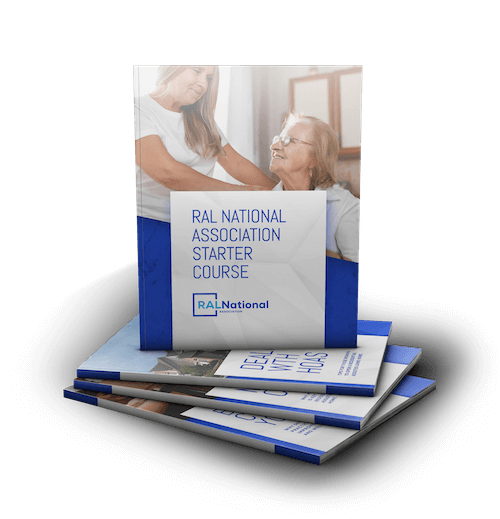We Are Currently At A Point In History Where We Are Experiencing One Of The Largest Generational Groups Entering Their Senior Years.
As a result, the specific need for quality caregivers is at an all-time high. In an already tight labor market, we need to come up with strategies and solutions that address the fact that there are more job openings than available workers.
Retaining quality staff is often an issue for assisted living home owners and managers, even without this current labor market. Therefore, it is critically important to utilize unique tools and strategies to hire and retain the right caregivers. Senior living operators often give confusing responses when asked about staff turnover rates. Here are some responses that you’ll likely hear.
Seven Operator Responses About Turnover Rates
- “It’s not too bad.”
- “It’s not quite where we wanted to be.”
- “Well, I don’t know.”
- “Are you talking about our long term employees or our new hires?”
- “We don’t count turnovers until they pass 90 days.”
- “It all depends on the type of position that you are talking about.”
While there is some degree of truth and each one of those statements, ultimately, they are not addressing the truth about their staff turnover rate in its totality. Some senior living operators guard their occupancy numbers closely. They know exactly how many resident beds are empty and how many beds are occupied.
In fact, most operators are well aware of how many beds are likely to be empty within the next few weeks, and how many are reserved with deposits. Any good operator will even be able to tell you how many hot leads the residential assisted living home has lined up.
The staff turnover rates are equally as important as the number of seniors occupying each bed. Failing to face reality about the numbers makes it much more difficult to improve retention rates.
How to Calculate Turnover Rates
What should your basic calculation of staff turnover and retention rates look like?Calculate the total number of people who have left your place of employment divided by the current number of total employees each year.
According to expert attorneys for employees, you should absolutely do further turnover analysis as you develop your retention plan, but for now that is the number you should be tracking. Awareness is key.
If at any point, the turnover rate goes down, you might want to figure out what you’re doing differently and repeat that if your number ever starts to climb again. Afterward, take note of what you’re doing and make adjustments accordingly.
Why Is Retention Important?
In residential assisted living homes, employee turnover is a common, yet expensive challenge. This challenge can be especially frustrating and professionally upsetting because residents typically try to build relationships with the people that are helping with their care.
The constant switching of employees prevents residents from having a chance to bond and build relationships with their caregivers. This is an obstacle to quality care.
Employee retention strongly benefits the happiness and health of seniors. Evaluating the cost of running consistent programs is difficult when tasked with the responsibility of increasing retention and reducing turnover. Understanding anti-discrimination laws is important in this context, ensuring that retention efforts comply with legal standards and contribute to a fair and inclusive workplace.
Tips to Reduce Turnover and Increase Retention
- Retention Bonuses: Offering cash payments as incentives for employees to stick around is an option. The requirements for earning such a bonus usually requires maintaining about 2-3 years of employment. Bonuses often range between $500 – $1000.
- Recruitment Bonuses: Recruitment bonuses are usually effective. Most of the time, recruitment bonuses are not paid out in full, but were staggered in increments to promote retention.
- Tuition Reimbursement: RAL homes do not usually offer tuition reimbursement, however, if certain training programs will benefit your staff, consider tuition reimbursement for these programs.
- Mentoring Programs: A mentoring program allows employees to connect with other employees, build leadership skills and advance within the RAL home business. Less than 4 percent of assisted living communities utilize the mentoring strategy, but it just may hold the key to greater success for your RAL business.
Turnover Compromises Care and Workflow
There has been a direct correlation found between staffing levels and quality outcomes. As staffing levels increase, the quality of outcomes undoubtedly increases as well. During those times when turnover is high, communities are frequently short staffed, which leaves an extra workload to be picked up by other team members. This often leads to burnout.
Staff can become irritable, and their work performance may be compromised. When staff is completely overwhelmed, it is not uncommon for caregivers to seek new employment altogether. Hence, the high turnover rate can become a vicious cycle, if operators overlook the root of the issue. Turnover rates also impact continuity of care.
New caregivers have to learn the needs of each resident that they are responsible for helping. These inconsistencies poorly reflect on the quality of care in RAL homes with high turnover and low retention. Constant turnover with staff can also negatively affect the entire atmosphere of the community. The overall morale and engagement levels of the community could plummet, which perpetuates added problems.
People are usually more happy and comfortable when working alongside familiar faces. Having to consistently get reacquainted with residents and co-workers makes for a work environment that lacks a smooth and easy operational flow. Overall, this often causes a less desirable and more stressful work environment. As a result, communities oftentimes suffer with employee engagement.
How Recruitment Efforts are Hindered
Consider the ways that high turnover rates will impact your recruiting efforts. It’s often said that “bad news travels the fastest,” and that’s a true saying. If an employee leaves disgruntled, they usually won’t hesitate to tell their friends who also work in the industry.
Create positive work experiences, which will also help you avoid developing a bad RAL home reputation amongst the circle of caregivers in your community. Disgruntled employees may even post about their bad experiences on job boards or social media sites for people to view and hear their testimony.
As a result, your recruitment efforts will show limited results because word of mouth travels fast. Don’t limit your recruitment efforts by failing to treat your employees like they matter to the success of your business.
Learn How to Successfully Operate Your Business At RALNA
You’re definitely on the right path by doing your research to learn how to best operate your RAL home. Don’t hesitate to take time to read an article titled, Strategies for Retaining RAL Staff, by clicking https://residentialassistedlivingacademy.com/strategies-for-retaining-your-ral-staff/.
In addition, the Residential Assisted Living National Association provides a wide range of information to help owners and operators of RAL homes advance their businesses. Visit www.RALNA.org for additional information on providing quality care for seniors across the country. Check out the site today, and then join our rapidly growing initiative to start benefiting from all RALNA has to offer.











